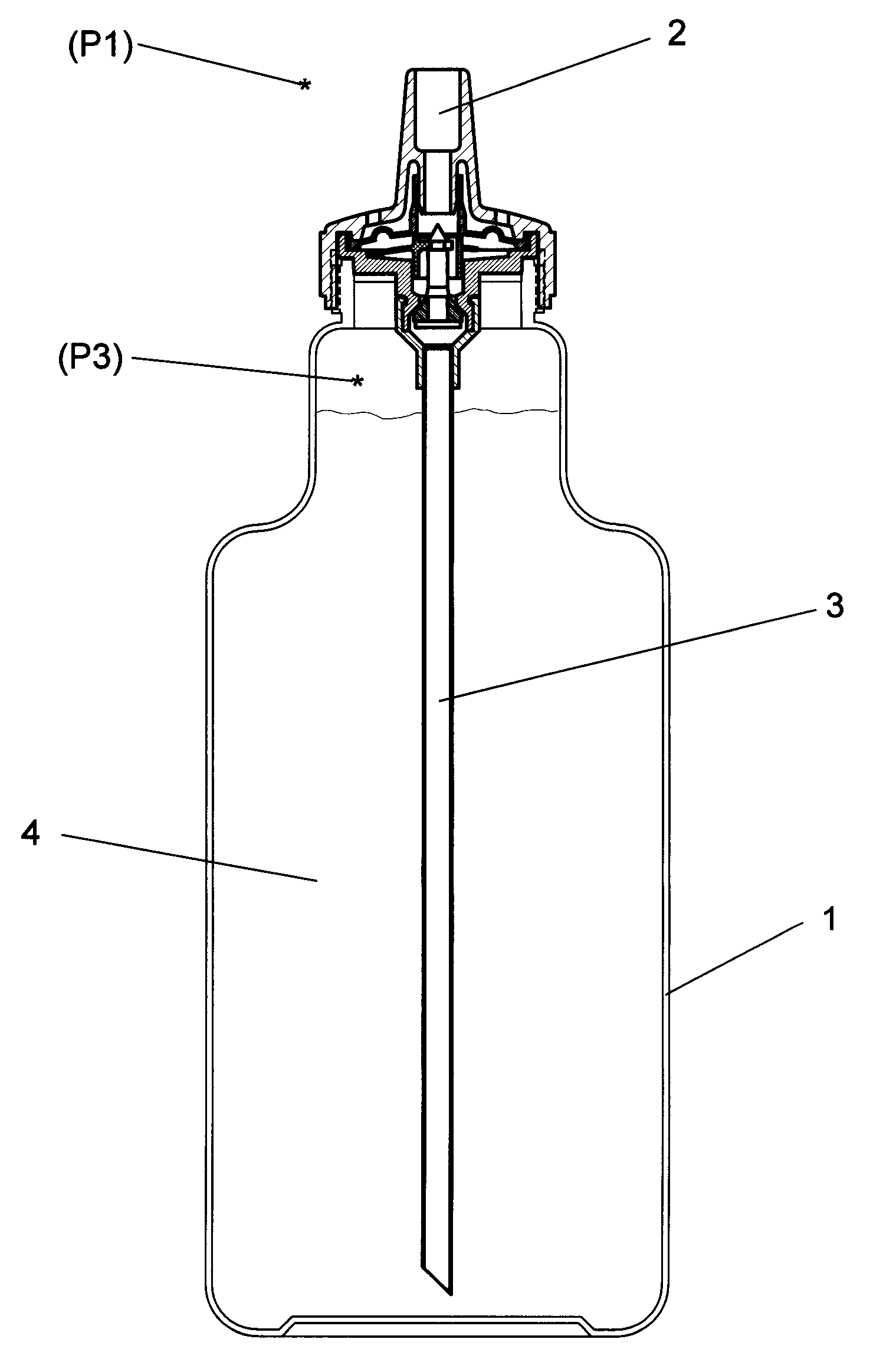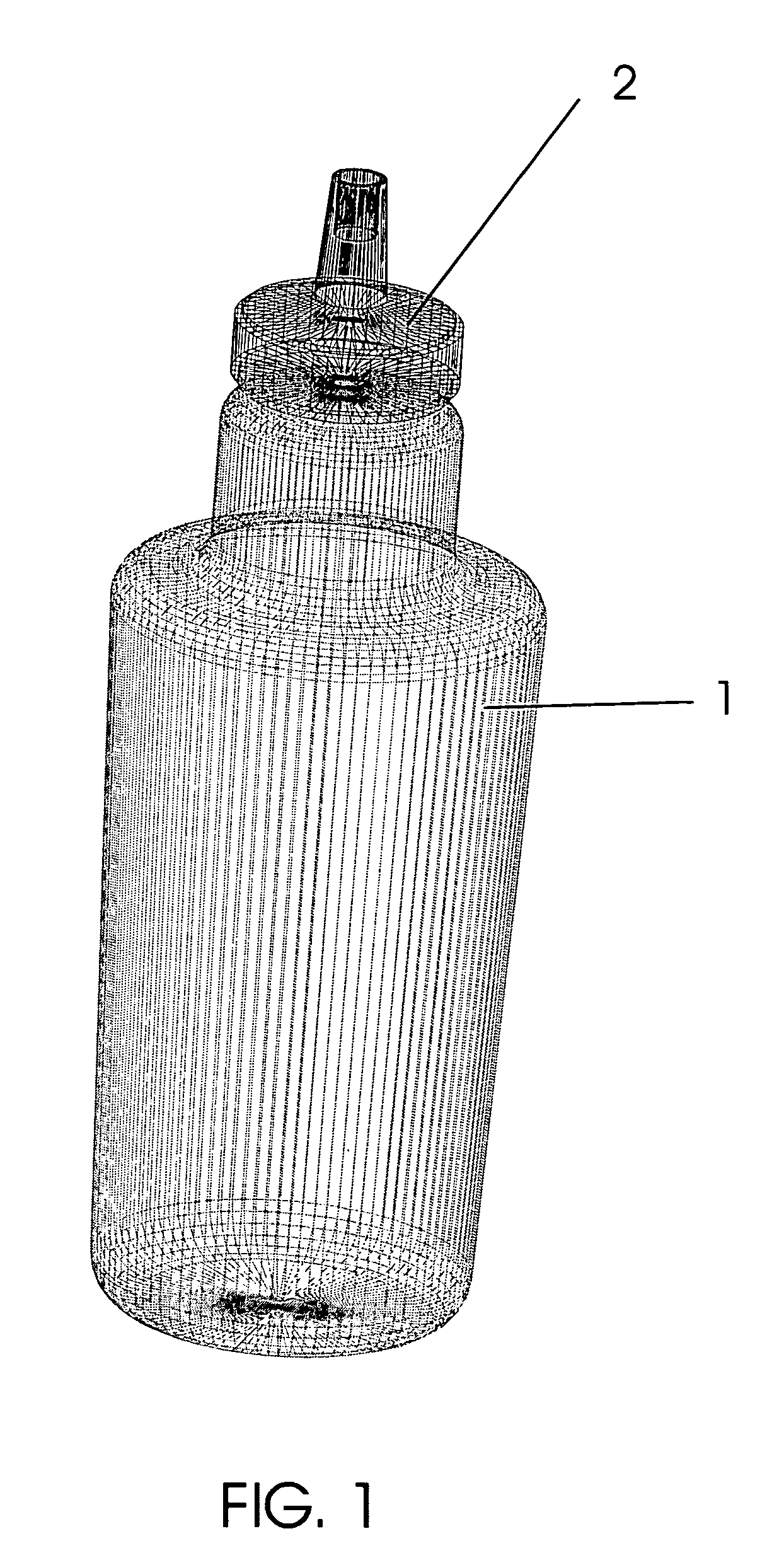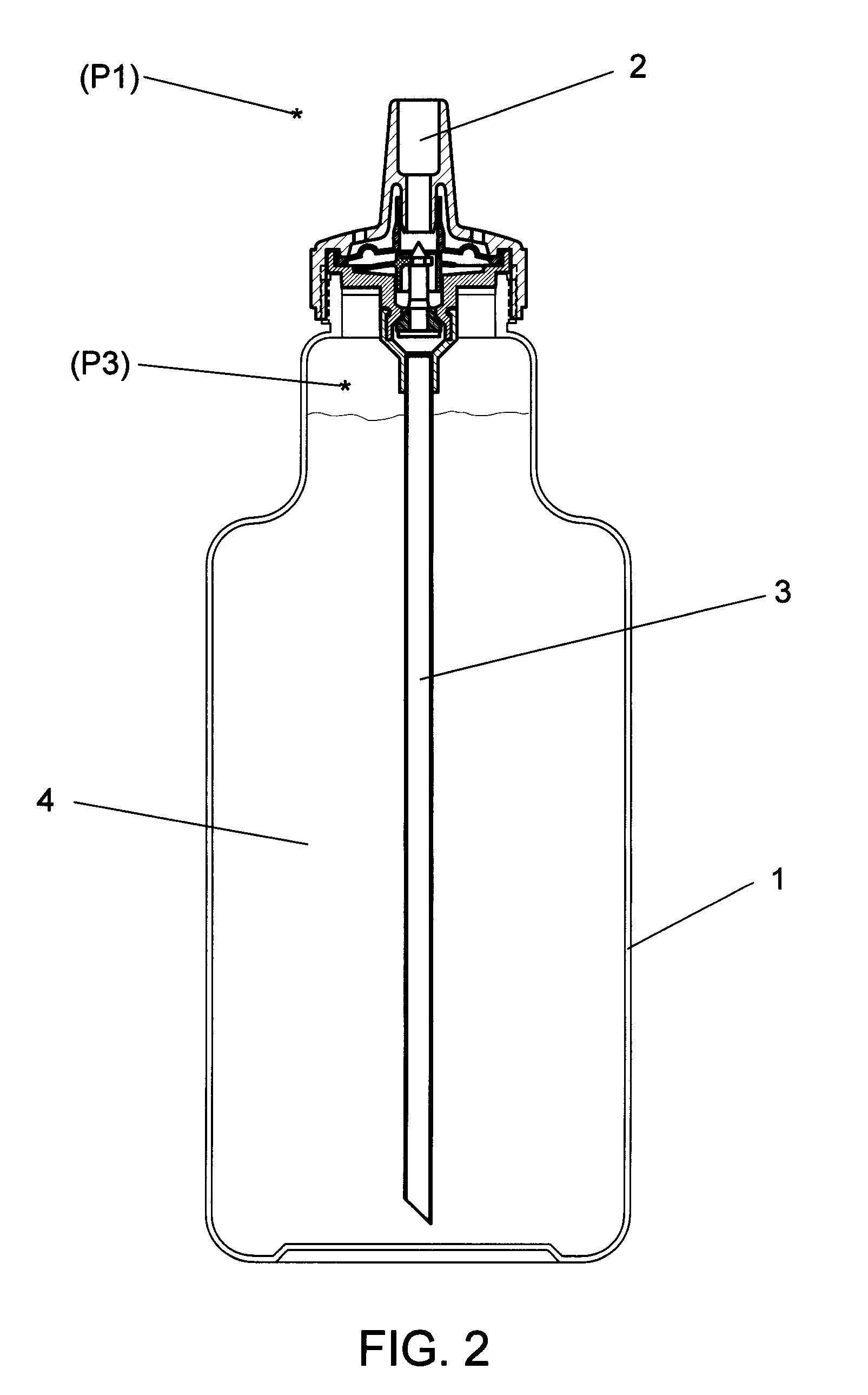Self regulating spout
a self-regulating, spout technology, applied in the direction of liquid dispensing, drinking vessels, applications, etc., to achieve the effect of reducing vacuum and making fluid extraction easy
- Summary
- Abstract
- Description
- Claims
- Application Information
AI Technical Summary
Benefits of technology
Problems solved by technology
Method used
Image
Examples
first embodiment
[0020]In FIGS. 3-a through 3-i (in which FIG. 3-d is a top view of blade spring FIG. 3-e) the individual parts are drawn that makes up the SRS as described above of the first preferred embodiment. This first embodiment of the SRS, which can be disassembled for cleaning, is not meant to limit the invention to other configurations or be only used for carbonized beverages. Other configurations are conceivable, whereby the same principle of force enlargement is applied by using an inverted perforated membrane that activates a valve, against the inside pressure of the bottle or fluid container.
[0021]In FIGS. 5 and 6 a second preferred embodiment is shown, depicting a longitudinal cross section and a top view of the SRS respectively for use with a disposable bottle, whereby the SRS is assembled in such away that it cannot be taken apart for cleaning and is for one time use only, hereafter further identified as SRS 2′. As the principle of operation of the SRS 2′ for this application, is ex...
second embodiment
[0023]The SRS 2′ assembly, being the invention, comprising a spout 7′ and a valve housing 5′ in which the inverted membrane 8′ and valve assembly 12′, 13′ and 24′ are held, is gas tight connected with a screw cap 26′ to the bottle neck 21′ of bottle 1′ by means of a screw thread connection 20′.
[0024]The prime difference between the two described embodiments of the invention is that the separate blade spring 16 of FIG. 3 for closing the valve has been eliminated and that the valve thereby is closed by the inverted membrane itself, as depicted in FIG. 5.
[0025]The thus described embodiments require a gas tight sliding seal between the extruded tube 9 (9′) of the inverted membrane 8 (8′) with a seal 10 (10′) sliding over the extruded inner tube / (spigot) 11 (11′) within the spout 7 (7′) and thus forming a siding seal. Air leakage at this location could cause the SRS to malfunction. This, however, will never result in a leakage of the fluid or gas from the bottle or container to the outsi...
PUM
 Login to View More
Login to View More Abstract
Description
Claims
Application Information
 Login to View More
Login to View More - R&D
- Intellectual Property
- Life Sciences
- Materials
- Tech Scout
- Unparalleled Data Quality
- Higher Quality Content
- 60% Fewer Hallucinations
Browse by: Latest US Patents, China's latest patents, Technical Efficacy Thesaurus, Application Domain, Technology Topic, Popular Technical Reports.
© 2025 PatSnap. All rights reserved.Legal|Privacy policy|Modern Slavery Act Transparency Statement|Sitemap|About US| Contact US: help@patsnap.com



